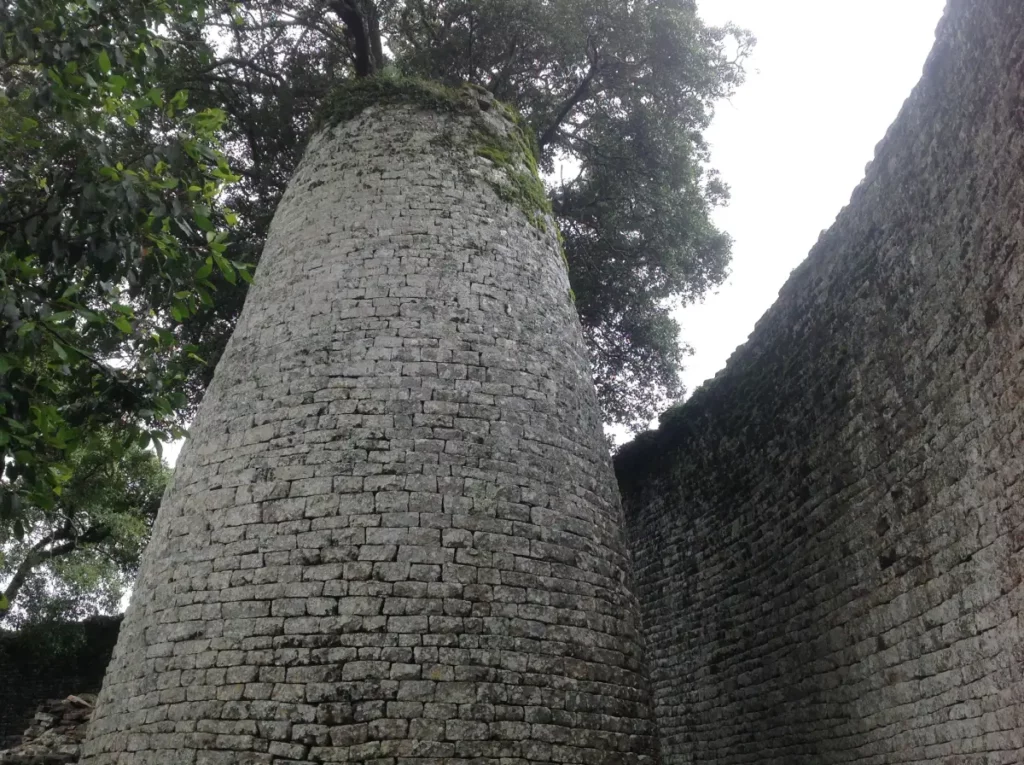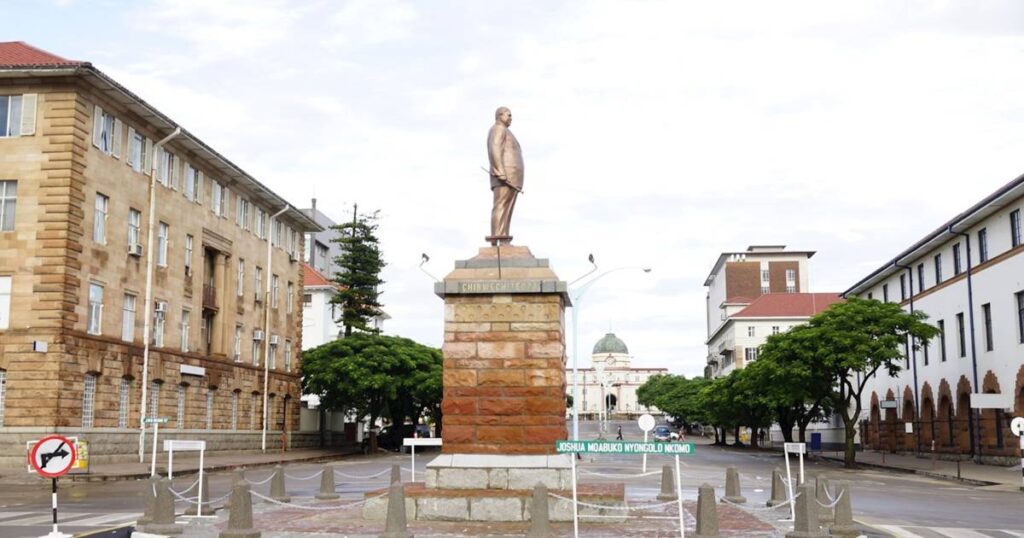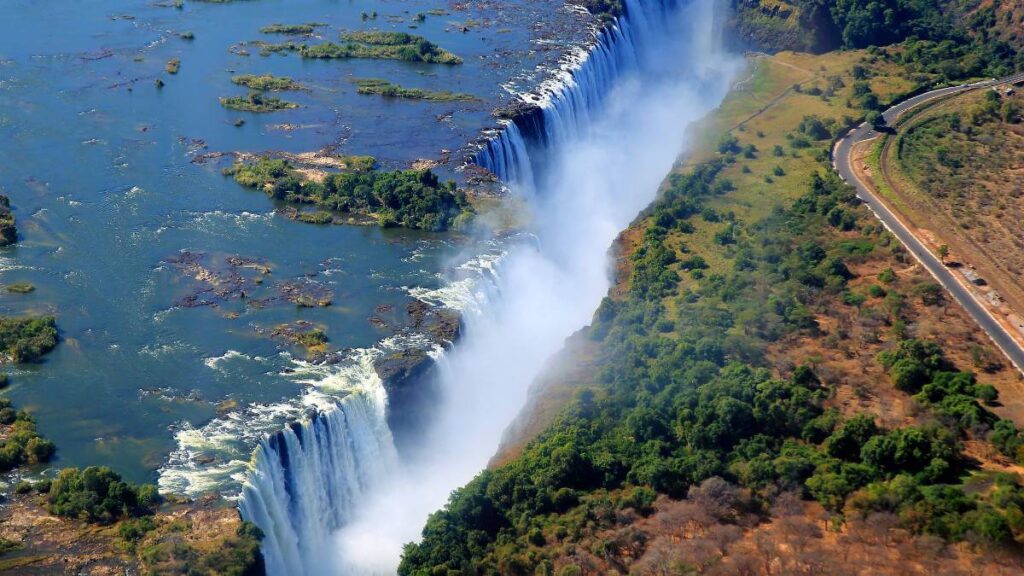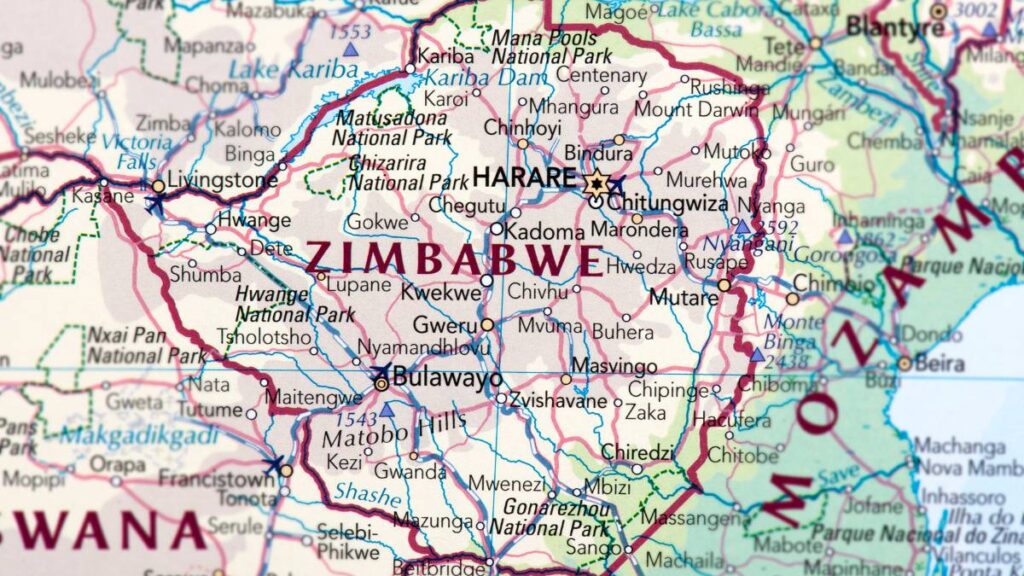Zimbabwe has a rich history and many interesting places for tourists to relish when they visit. It is a top safari destination thanks to its pristine wilderness sites, some of the continent’s best guides, Victoria Falls’ roaring torrent, and the theatrics of prey and predators.
This Southern African country is home to various landscapes, including savannas, hills, and rolling plains. There is also wildlife to be seen in Zimbabwe, including elephants and giraffes.
In this article, we’ll bring you the ten best places to visit in Zimbabwe.
1. Victoria Falls

Victoria Falls is one of the world’s most famous natural wonders and arguably one of the most important tourist attractions in Zimbabwe. This beautiful fall is among the world’s largest waterfalls, spanning over one hundred meters in width. The falls, which are 1.7 kilometers wide, straddle Zambia and Zimbabwe.
You can access cliff edges on both sides of the boundary through trails. The route meanders along the gorge’s edge on the side of Zimbabwe, with vistas providing stunning views of the tumbling river and the legendary rainbows hanging just above the divide. The breathtaking scene you’ll experience is something you will not forge in a hurry, even though the sound is reputed to be quite deafening, and you’re guaranteed to get drenched from the renowned falls’ spray.
The Zimbabwean town hosting Victoria Falls is well-known for its wide range of exciting extreme sports and amazing safari experiences since it is close to the actual falls. These activities encompass wildlife spotting, white-water rafting, bungee jumping, and abseiling.
The best time of year to visit is between late August and early December when the water levels are at their highest. And be prepared for crowds – Victoria Falls is one of Africa’s most popular tourist destinations. But trust us, it’s worth it. The sheer size and power of the falls are breathtaking, and there’s nothing quite like standing at the edge of the world’s largest waterfall. Just make sure you bring your raincoat.
2. Great Zimbabwe

Great Zimbabwe holds a collection of ruins that spans about thousand eight hundred acres and was constructed by native Africans who are thought to be the forebears of contemporary Zimbabweans. The structure, which was constructed during the thirteenth and fourteenth centuries, formerly served as the capital of a huge kingdom called the Munhumutapa Empire.
The site is the largest ancient stone building in southern Africa and one of the largest ruins in the world. There are several reasons why this UNESCO World Heritage Site is worth visiting.
The Great Enclosure, Valley Complex, and Hill Complex are three separate architectural clusters. No mortar was used in the construction of any of the constructions, which were all made of uniform, rectangular granites that were neatly stacked on top of each other. The amazing structures have endured this for 700 years. A sixty-meter-long part of this stone wall is as much as six meters in thickness and twelve meters in height.
3. Matobo Hills

The Matobo Hills, considered Zimbabwe’s spiritual center, is a site of several of the most breathtaking granite vistas on earth. Among the most popular tourist destinations in Zimbabwe, the captivating granite rocks and the lunar terrain of stabilizing rocks called kopjes—colossal rock formations put on top of themselves, looking as though they will topple over—are not just an impressive treat to the eyes but also a magnificent natural scene and piece of artwork. This location has a fascinating past that dates back to when molten material erupted over the region about two billion years ago.
A few of these rocks are decorated with prehistoric rock art that the San bushmen produced roughly two millennia ago. As hallowed shrines and sanctuaries, the Matobo Hills continue to have a special place in the hearts of the locals.
Matobo National Park

Matobo National Park is best for visitors who are looking for a place to appreciate nature and wildlife. The park has over 100 miles of hiking trails that wind through the bush and lead to dramatic vistas. There are also opportunities for bird watching, game viewing, and cave exploration. Visitors can stay at one of the park’s campsites or lodges, or visit for the day.
Some stats about the park:
- The park covers an area of 26,000 hectares
- There are over 400 species of birds in the park
- The Matobo Hills are made up of granite boulders that are millions of years old.
4. Khami Ruins

The Khami Ruins, which are only twenty-two kilometers from Bulawayo and are on the list of UNESCO World heritage, may not be as large as Great Zimbabwe. Still, they are nonetheless interesting archaeological monuments. Khami, the second-biggest stone structure ever constructed in Zimbabwe, was constructed about 1450-1650 as the Torwa dynasty’s capital and deserted in the nineteenth century when the Ndebele people arrived. It is dispersed over a 2-kilometer plot in a serene natural environment with a view of the Khami Dam.
Although the intricate network of walled constructions has many characteristics of Great Zimbabwe, its characteristics and expressions can be seen in the intricate patterns and embellishments. It features the lengthiest decorated wall located in the whole sub-region, and archaeological traces of Ming and Spanish porcelain discovered at these ruins show a previous connection to commerce; a number of these traces are on exhibit at the Natural History Museum in Bulawayo.
5. Mana Pools

Mana Pools National Park is located in the northeastern corner of Zimbabwe and covers an area of 2,196 km². It was proclaimed a national park in 1983 and was declared a UNESCO World Heritage Site in 1994. The park is noted for its wide variety of wildlife, including lions, leopards, elephants, hippos, and crocodiles. It is also home to around 400 species of birds.
The park can be divided into three main areas: the floodplain, the woodlands, and the escarpment.
- The floodplain is home to most of the park’s wildlife and is characterized by wide stretches of riverine forest and tall grasses.
- The woodlands are dominated by miombo trees and are popular with birdwatchers.
- The escarpment is a rocky area that separates the floodplain from the upland areas.
Mana, which translates to “four” in the native dialect, refers to the greatest four of them, although there are also a ton of tiny puddles to view.
The major result is that species congregate there to drink, rendering this tourist attraction site a prime location for wildlife viewing.
Mana Pools National Park offers visitors a unique opportunity to enjoy African wildlife in its natural habitat. There are several activities available in the park, including game drives, walking safaris, canoeing, and fishing.
6. Hwange National Park

Hwange National Park is Zimbabwe’s largest game reserve, covering over 14,650km². The park is home to over 100 mammalian species and more than 400 bird species. It is best known for its large population of elephants, which roam free across the park. Other major animal attractions include lions, leopards, rhinos, and buffalo.
Since Hwange National Park contains the greatest diversity of animals of any national park anywhere in the globe, it is, without question, among the most popular tourist destinations for wildlife enthusiasts. Hwange National Park’s game watching and views are unmatched since it is inhabited by more than one hundred different mammalian species, such as the legendary African Big 5: buffalo, rhino, leopard, elephant, and lion.
Hwange National Park is a great place to visit for its abundance of wildlife and scenic landscapes. The park has several different camping and lodging options, as well as a variety of activities including game drives, walks, and boat cruises.
7. Lake Kariba

Kariba is a tourist attraction because it is the largest man-made lake in the world. It was created in 1958 by the Kariba Dam, which is the world’s largest earth-fill dam. The lake stretches 220 km long and covers more than 5 580 km². It is located on the country’s northern side, bounded in the northeast by Victoria Falls, and shares a boundary with Zambia.
On houseboats, tourists can experience Lake Kariba’s marvels in the traditional and unquestionably finest way possible. Kariba is widely known for its exceptional sightings of elephants, crocodiles, hippos, and various birds. It is also among the top locations in the world for hunting tiger fish, a fierce aquatic species.
There are many chances to see wildlife on the islets in Lake Kariba as well. Matusadona National Park is a fascinating wildlife region on the southern shore of Kariba. A visit to Kariba is sure to be an unforgettable experience!
8. Chinhoyi Caves

The enigmatic Chinhoyi Caves, situated in Mashonaland West, isn’t just among the country’s best tourist destinations and a site of geological importance. The Chinhoyi Caves National Park protects the underground network of dolomite and limestone tunnels and caverns that comprises the caves. Since local elders consider the caverns sacred, they’ve got a mysterious allure.
Historically known as “Chirorodziva,” which means the “Pool of the Fallen.” The Nguni Tribe was involved in an incident in the 1830s that is thought to be the source of the name.
An excellent chance to learn and hear about the rich history of the caverns and the legend surrounding this enigmatic location is during a tour of Chinhoyi Caves. Professional scuba divers frequently travel to Chinhoyi.
9. Gonarezhou National Park

The stunning red rock cliffs that rise into the skies like they’re guarding the limit of the world at the time are this national park’s claim to fame. There are two upscale resorts in this region, and they’re both deeply committed to conservation and environmentally friendly community development. For those who wish to get back to the essentials, there are also self-catering hotels and “undeveloped” campgrounds.
Although it may become quite hot here, there are substantial advantages of visiting this place, like the possibility of seeing rhinos, wild canines, elusive king cheetahs, and long-tusked elephants without running into another person for kilometers.
10. Mutarazi Falls Skywalk and & Skyline

Although Zimbabwe is stunning, the Mutarazi Falls Skywalk bridge in Nyanga isn’t for the timid-hearted folks.
Since the development of this Sky Line and Sky Walk in Nyanga, visitors can now fully appreciate the Mutarazi Falls. The Sky Line and Sky Walk are amazing, and it feels as though you are linked to the Mutarazi Falls and the surrounding regions when you walk on them or experience the liberty of flying over them.
Mutarazi Falls Skywalk and Skyline are inspiring and thrilling at the same time. Folks today, particularly those from Africa, need to sense, experience, and cherish their environment in new and inventive ways.
Conclusion
So there you have it – our top 10 picks for the best places to visit in Zimbabwe. We hope that this list has given you a good starting point for your explorations of this amazing country. Whatever you do, don’t forget to enjoy the incredible wildlife and stunning landscapes that make Zimbabwe such a special place. Have you been to any of these spots? What was your favorite experience? Let us know in the comments below!



